Excerpt from a report from the Year Book of Dutchess County Historical Society, 1918 pages 21-27. This came from the semi-annual meeting in October of that year when the society visited several sites in and around Red Hook, including the Losee/Thomas/Red Tavern house. My notes and corrections are in italics. The house is located in Upper Red Hook on Spring Lake Road, click here for google maps to see exactly where. My great-grandfather Harvey Losee was born 30 Mar 1867 in the house Upper Red Hook and died 20 Feb 1931 in the same house after a 10-year illness.

“The next stop was at the famous Red Tavern in Upper Red Hook, where the present occupant, Dr. Harvey Losee (on the left) read the following paper:
Members of the Dutchess County Historical Society: It gives me great pleasure to extend to you a hearty welcome to ye ancient village of Red Hook, at present yelept (yclept-“called”) Upper Red Hook.
When Mr. Adams called upon me not long ago, and said that this burg was upon your itinerary for this year, and asked permission to see “The Old Red Tavern” I told him it would give me the greatest pleasure; but when he also asked me to make a “speech”, I demurred. There is something so formal and stage frighty about the term “speech”, that timid souls instinctively take fright. But upon questioning him, Mr. Adams hedged, and said I would not be expected to act the part of a Cicero, but rather a cicerone in the matter of “The Old Red Tavern”, and so, as the nervous young speaker said, I kindly consented.
“The Old Red Tavern” or “The Old Brick Tavern” or “The Thomas House” was, according to some authorities, the thing that gave the village and township its name, though this point is more or less disputed; but the thing is certainly very plausible as the old red Dutch tavern stood at the angle or hook where the great thoroughfare, to Connecticut and the East, branched from the Albany Post Road. Farms came by this road in great numbers from the East, bringing their produce to be shipped by sailing craft to New Amsterdam or New York, and “The Old Red Tavern” was one of their regular ports of call, and must have undoubtedly become in time a notable public landmark, than that it should have received it from a strawberry patch.
 It is not possible to fix upon even an approximate date when the house was built. The custom which was employed in the building of many of the early houses, of inserting the date in the gable, was, unfortunately not observed in this case. The late Gen. de Peyster, a member of many historical societies, and an antiquarian of some note, showed me a map (see scan at right, click to enlarge) of the date 1789, in which this house is set down and spoken of as a very old house at that time. There seems little doubt that it is well over 200 years old at the present time (1918). The house was not built of Holland brick, as some have thought, but brick made of the clay from our own Hudson. But the brick is of such adamantine hardness, that the masons, in putting in a new window, or making repairs, encountered such a difficult task that they always maintained that such brick had never been made in this country. The house was built in the simple Dutch style, with gambrel roof and dormer windows. A good many years ago, when the house was renovated, this characteristic roof was removed, and a gable added, which of course was a great architectural error. The oak beans, as in all the old houses, are large and hand-hewn; one, the great trimmer on the third floor, being 17×17. The walls of the house today stand perfectly four square, but the floors, due to the very weight of the heavy timbers, show some slight sagging. The cellars which are rather dungeon-like, are crudely hewn out of the rock, and in them during Revolutionary days, were incarcerated British prisoners, as well as an occasional continental soldier who had proved rebellious to military discipline. It was the general saying among our old inhabitants, who had it from their parents or grandparents, that Washington had stopped at the Old Tavern on one occasion, while Lafayette was said to have spent two or three days there. Gen. Gates is also reported to have stopped once with his command while Gen. Putnam maintained it as his headquarters for a brief period while in this section of the Hudson. The late William H. Teator (b. 1817) told me that his father had told him that he was at “The Old Brick Tavern” one night while a regiment of Putnam’s soldiers were quartered in the vicinity, and on that occasion a hogshead of rum was broached and finished in the same evening. There was a large block and tackle, he said, by which the casks of rum were hauled up and tiered in the back part of the room.
It is not possible to fix upon even an approximate date when the house was built. The custom which was employed in the building of many of the early houses, of inserting the date in the gable, was, unfortunately not observed in this case. The late Gen. de Peyster, a member of many historical societies, and an antiquarian of some note, showed me a map (see scan at right, click to enlarge) of the date 1789, in which this house is set down and spoken of as a very old house at that time. There seems little doubt that it is well over 200 years old at the present time (1918). The house was not built of Holland brick, as some have thought, but brick made of the clay from our own Hudson. But the brick is of such adamantine hardness, that the masons, in putting in a new window, or making repairs, encountered such a difficult task that they always maintained that such brick had never been made in this country. The house was built in the simple Dutch style, with gambrel roof and dormer windows. A good many years ago, when the house was renovated, this characteristic roof was removed, and a gable added, which of course was a great architectural error. The oak beans, as in all the old houses, are large and hand-hewn; one, the great trimmer on the third floor, being 17×17. The walls of the house today stand perfectly four square, but the floors, due to the very weight of the heavy timbers, show some slight sagging. The cellars which are rather dungeon-like, are crudely hewn out of the rock, and in them during Revolutionary days, were incarcerated British prisoners, as well as an occasional continental soldier who had proved rebellious to military discipline. It was the general saying among our old inhabitants, who had it from their parents or grandparents, that Washington had stopped at the Old Tavern on one occasion, while Lafayette was said to have spent two or three days there. Gen. Gates is also reported to have stopped once with his command while Gen. Putnam maintained it as his headquarters for a brief period while in this section of the Hudson. The late William H. Teator (b. 1817) told me that his father had told him that he was at “The Old Brick Tavern” one night while a regiment of Putnam’s soldiers were quartered in the vicinity, and on that occasion a hogshead of rum was broached and finished in the same evening. There was a large block and tackle, he said, by which the casks of rum were hauled up and tiered in the back part of the room.
 The first story, at the time, he thought, being practically all in one room, with a large fire-place at each end (At right, Harvey’s parents John Eckart Losee and Mary Elizabeth Knickerbocker in the living room of the house c. 1890). And for some reason, which he said he didn’t understand, it was always the custom to broach the very topmost casks first. Possible there was some system of siphonage, or gravity arrangement by which the worthy Dutch burghers sitting around the big fire-place smoking their long nines, could obtain their liquor without even the exertion of crooking their elbows! Those were certainly rum days! I found an old day book (ach, where is it now, Harvey?) amongst some rubbish, which had evidently belonged to one of our early store-keepers, as the charges were in pounds, shillings and pence, and the chirography was characteristic of that period – for it was equal almost to our finest engraving, and the ink was as bright as if written but the day before. One customer, “a thirsty soul,” whose name appeared at most regular intervals of three or four weeks, was invariable charged with five gallons of rum at the rate of two shillings and six pence. And there would occasionally be entered upon the book what would seem might have been a sop to his better half, namely the purchase of a quarter or half pound of tea. Could the shades of those worthies look forth to-day upon this now almost entirely arid country, they would certainly see a great change in this respect. And in speaking of shades, we are reminded of the ghost or spook which haunts “The Old Red Tavern.” In reading our histories and manuscripts, while collecting material for this cicerone business, I noted that the History of Dutchess County, in the matter of the hanging on the Tory at the Old Tavern, says that the Albany stage coach drove up at just the critical moment, and Judge Yates descended and ordered the victim lowered, and threatened them all with hanging if they did not desist from their purpose. But the account of it which I prefer, is the one given me by my old friend Mr. Teator, before mentioned, who had the story from his father or grandfather, together with many other interesting stories of the early peoples and customs of this village. He said, that the person in question, was not only a Tory, but a spy, and had been caught red-handed in conveying information to the British concerning the disposition and strength of Putman’s forces, and that he was hung one night quite right and proper at “The Old Brick Tavern,” and they used the very tackle which hauled up the rum and other heavy commodities, for this purpose. And people, who in later days inhabited the house, said that upon certain moonless nights, when the wind was in a certain quarter in the East, one could hear the creaking of the old tackle as it was being drawn up, together with gasps and guttural groans, as if emitted by a strangling person; while occasionally, there would be bursts of demoniacal shouts and laughter, as from a rum-crazed crowd. And this part of the story I can vouch for, as I have heard it all myself many a time – with only the slight difference, however, that while I have never noted that it occurred upon nights when the wind was in any particular quarter, yet I had noticed that it was very apt to occur upon nights after the ladies of our community had served one of their famous suppers in these rooms below.
The first story, at the time, he thought, being practically all in one room, with a large fire-place at each end (At right, Harvey’s parents John Eckart Losee and Mary Elizabeth Knickerbocker in the living room of the house c. 1890). And for some reason, which he said he didn’t understand, it was always the custom to broach the very topmost casks first. Possible there was some system of siphonage, or gravity arrangement by which the worthy Dutch burghers sitting around the big fire-place smoking their long nines, could obtain their liquor without even the exertion of crooking their elbows! Those were certainly rum days! I found an old day book (ach, where is it now, Harvey?) amongst some rubbish, which had evidently belonged to one of our early store-keepers, as the charges were in pounds, shillings and pence, and the chirography was characteristic of that period – for it was equal almost to our finest engraving, and the ink was as bright as if written but the day before. One customer, “a thirsty soul,” whose name appeared at most regular intervals of three or four weeks, was invariable charged with five gallons of rum at the rate of two shillings and six pence. And there would occasionally be entered upon the book what would seem might have been a sop to his better half, namely the purchase of a quarter or half pound of tea. Could the shades of those worthies look forth to-day upon this now almost entirely arid country, they would certainly see a great change in this respect. And in speaking of shades, we are reminded of the ghost or spook which haunts “The Old Red Tavern.” In reading our histories and manuscripts, while collecting material for this cicerone business, I noted that the History of Dutchess County, in the matter of the hanging on the Tory at the Old Tavern, says that the Albany stage coach drove up at just the critical moment, and Judge Yates descended and ordered the victim lowered, and threatened them all with hanging if they did not desist from their purpose. But the account of it which I prefer, is the one given me by my old friend Mr. Teator, before mentioned, who had the story from his father or grandfather, together with many other interesting stories of the early peoples and customs of this village. He said, that the person in question, was not only a Tory, but a spy, and had been caught red-handed in conveying information to the British concerning the disposition and strength of Putman’s forces, and that he was hung one night quite right and proper at “The Old Brick Tavern,” and they used the very tackle which hauled up the rum and other heavy commodities, for this purpose. And people, who in later days inhabited the house, said that upon certain moonless nights, when the wind was in a certain quarter in the East, one could hear the creaking of the old tackle as it was being drawn up, together with gasps and guttural groans, as if emitted by a strangling person; while occasionally, there would be bursts of demoniacal shouts and laughter, as from a rum-crazed crowd. And this part of the story I can vouch for, as I have heard it all myself many a time – with only the slight difference, however, that while I have never noted that it occurred upon nights when the wind was in any particular quarter, yet I had noticed that it was very apt to occur upon nights after the ladies of our community had served one of their famous suppers in these rooms below.
 While having nothing to do with the history of the old house, there is an incident connected with it, which I am minded to give, as it was certainly a very odd coincidence. When I began my medical studies in New York, economy and companionship made it necessary for me to select a room-mate, and after a time I selected as such from among nearly 300 class-mates, a young Hobart graduate, whose home was upon the banks of Lake Ontario, and who had never been in this part of the country before (Photo at left of the NH Galusha paddle steamer taken by Harvey on a trip most likely to visit this classmate in Rochester c.1890). I had never heard his name before, nor had he ever heard mine. And yet, strange to relate, out in his own home he had a photograph of me. His sister had been the nurse in the last sickness of a distant relative; this relative (names, Harvey!) married a lady whose ancestors had lived in our old house, and one time upon a visit to this part of the country, they had come to see it, and my father had presented them with a photograph if it in which I, with other members of the family, figured. And upon the death of Mr. Rose, this photograph with other effects, came into the possession of my room-mates’s sister. The four walls of the old house to-day stand untouched by the hand of man or Time, but in the interior alterations have been of such a nature as to leave scarcely anything to suggest its venerable age.
While having nothing to do with the history of the old house, there is an incident connected with it, which I am minded to give, as it was certainly a very odd coincidence. When I began my medical studies in New York, economy and companionship made it necessary for me to select a room-mate, and after a time I selected as such from among nearly 300 class-mates, a young Hobart graduate, whose home was upon the banks of Lake Ontario, and who had never been in this part of the country before (Photo at left of the NH Galusha paddle steamer taken by Harvey on a trip most likely to visit this classmate in Rochester c.1890). I had never heard his name before, nor had he ever heard mine. And yet, strange to relate, out in his own home he had a photograph of me. His sister had been the nurse in the last sickness of a distant relative; this relative (names, Harvey!) married a lady whose ancestors had lived in our old house, and one time upon a visit to this part of the country, they had come to see it, and my father had presented them with a photograph if it in which I, with other members of the family, figured. And upon the death of Mr. Rose, this photograph with other effects, came into the possession of my room-mates’s sister. The four walls of the old house to-day stand untouched by the hand of man or Time, but in the interior alterations have been of such a nature as to leave scarcely anything to suggest its venerable age.
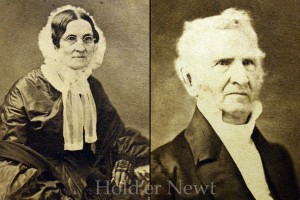 Of the people who lived in it, in its earlier days, when it was maintained as s hostelry and high wassail was held in its ancient hall, we have but little record; but later is was the abode of the law, and next came a good Dutch domine, (dominie) who established his parsonage here (Dominie-“Reverand” Andrew N. Kittle 1785 – 1864 and wife Eliza Gosman, on the right). And now for nearly one hundred years Medicine has had here its home. And fie upon thee! Sir Pessimist, if thou canst not see in this steady evolution, that the world doth move apace towards better things, when we progress from the rum-seller to the lawyer, to the domine, (dominie) to the doctor!
Of the people who lived in it, in its earlier days, when it was maintained as s hostelry and high wassail was held in its ancient hall, we have but little record; but later is was the abode of the law, and next came a good Dutch domine, (dominie) who established his parsonage here (Dominie-“Reverand” Andrew N. Kittle 1785 – 1864 and wife Eliza Gosman, on the right). And now for nearly one hundred years Medicine has had here its home. And fie upon thee! Sir Pessimist, if thou canst not see in this steady evolution, that the world doth move apace towards better things, when we progress from the rum-seller to the lawyer, to the domine, (dominie) to the doctor!
May the four walls of the old house weather the blasts of another centuries storms, and long eye that very like, the zenith of progress will be attained by its being the abode of the lady mayor, or other high official of a thoroughly evolutionized village!
 Losee/Thomas house from an unpaved Spring Lake Road c.1930
Losee/Thomas house from an unpaved Spring Lake Road c.1930


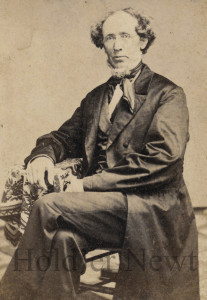
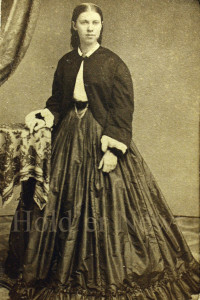


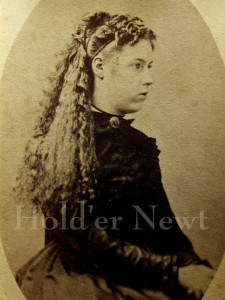
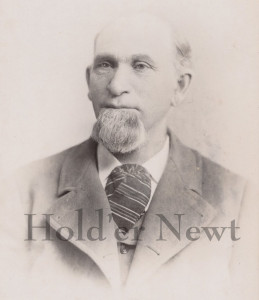
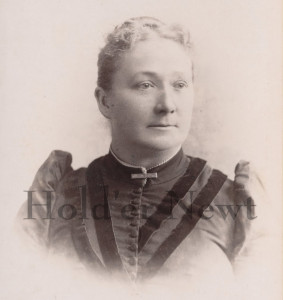
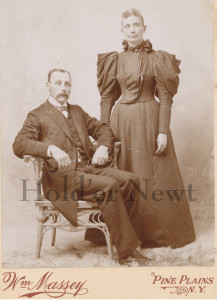

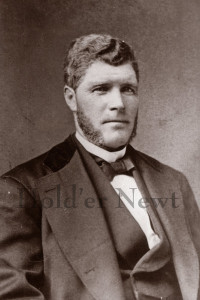

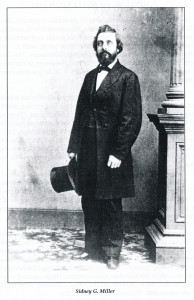

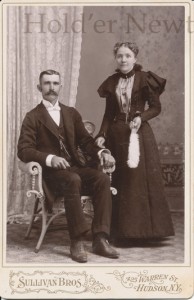
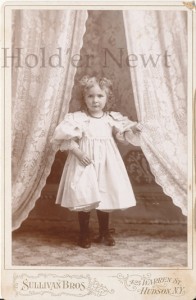
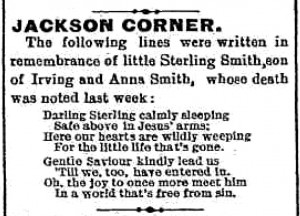
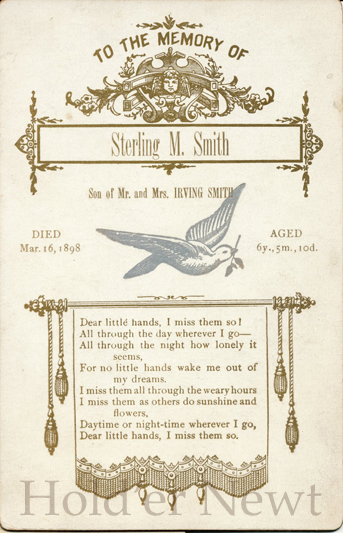
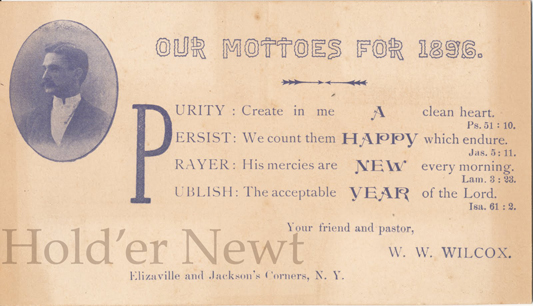





 Losee/Thomas house from an unpaved Spring Lake Road c.1930
Losee/Thomas house from an unpaved Spring Lake Road c.1930

